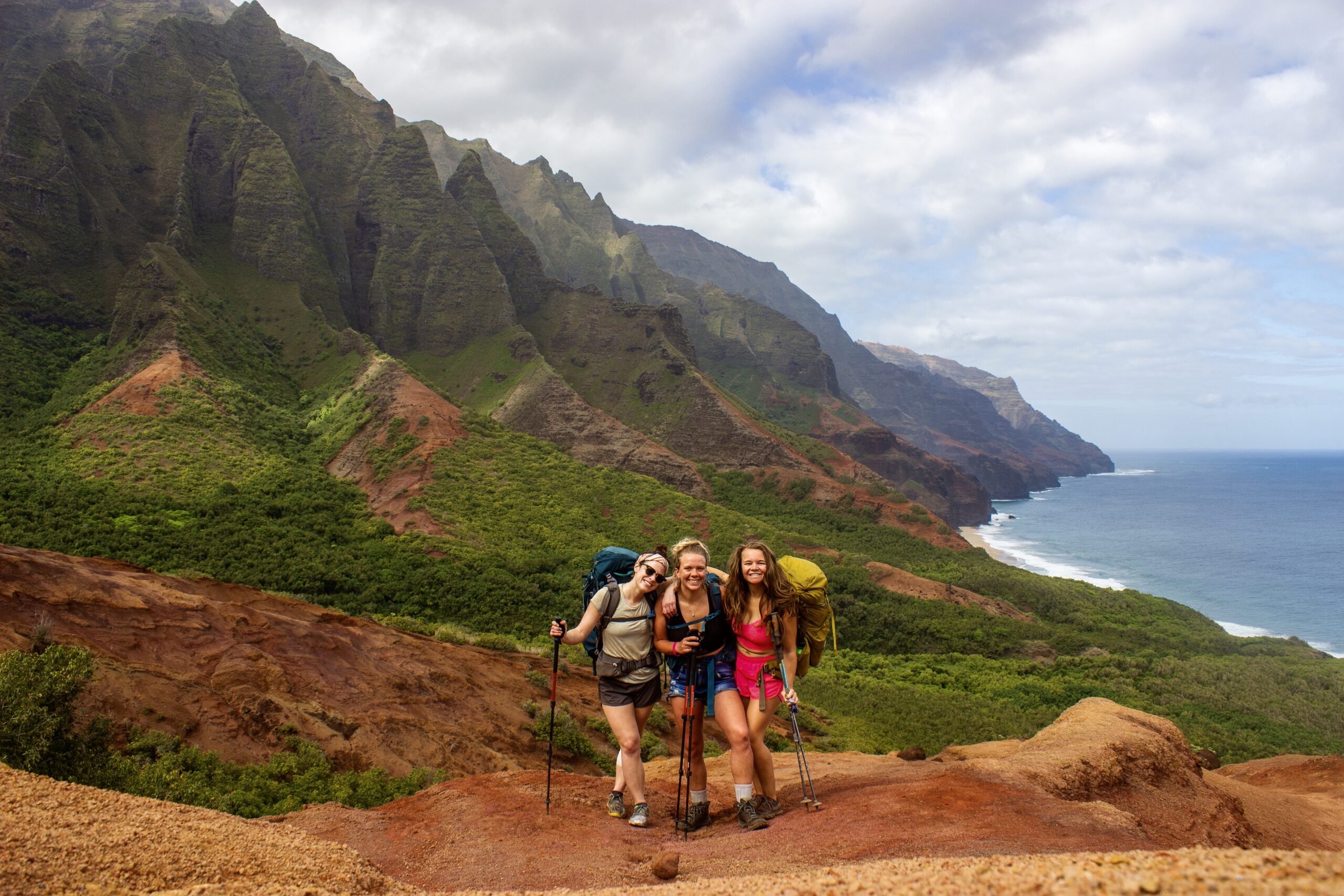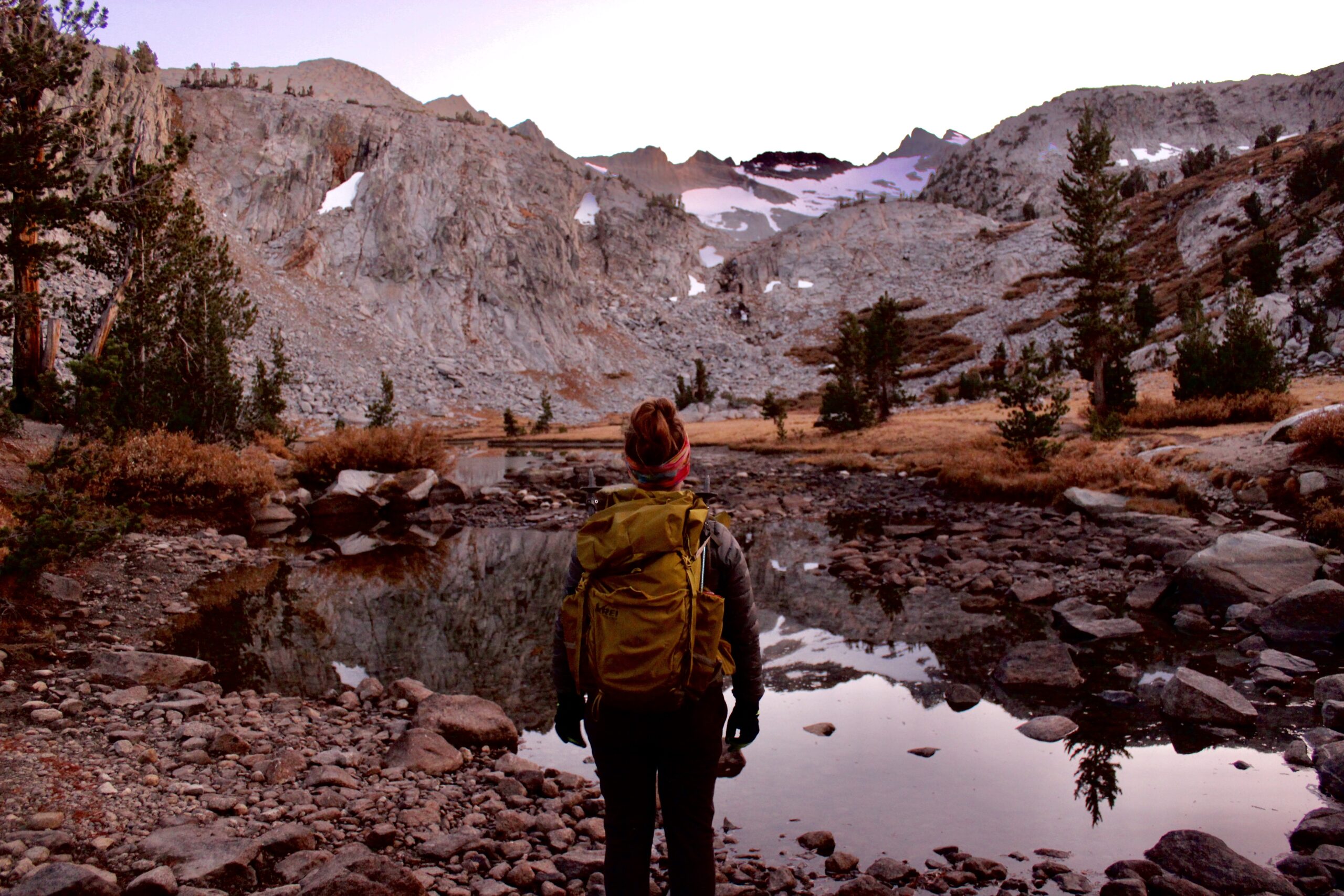Hiking the Salkantay Trek to Machu Picchu Without a Guide
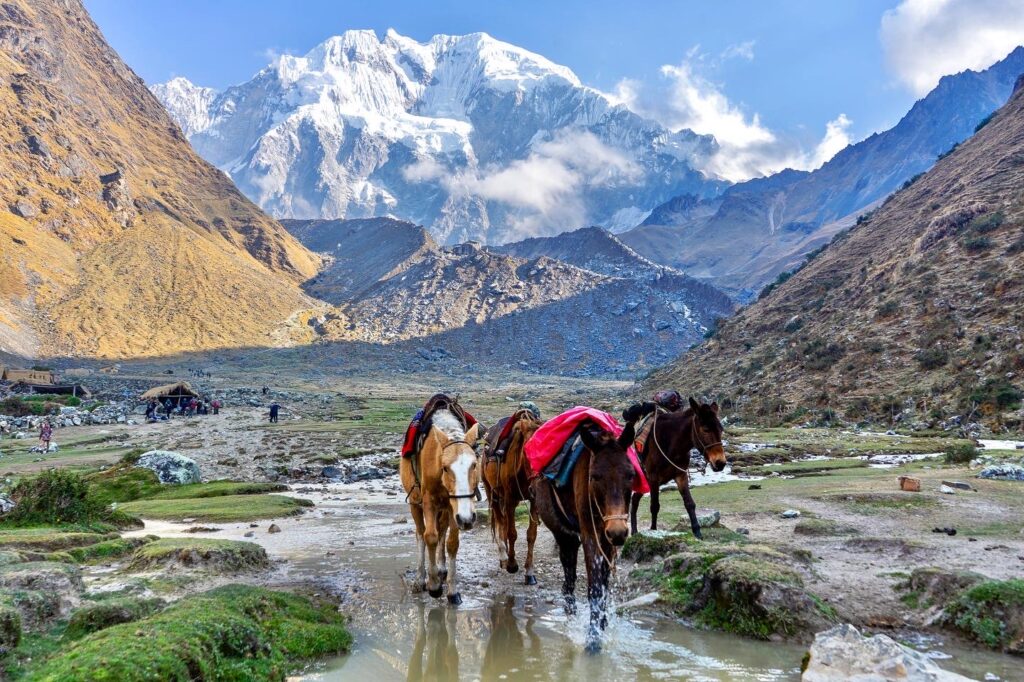
Hiking the Salkantay Trek to Machu Picchu was at the top of my list when planning my trip to Peru. And as a backpacking guide myself, I knew I was capable of planning the logistics to hike the Salkantay Trek without a guide.
I wanted to save some money, trek at my own pace, and avoid the crowds that come from hiking with guided groups in Peru.
Alas, following a few hours of research and after talking with a few other travelers at my hostel in Cusco, Peru, I had a pretty good idea for my itinerary. Planning the Salkantay Trek without a guide is pretty easy and here’s an idea of how you can do so too!
What is the Salkantay Trek?
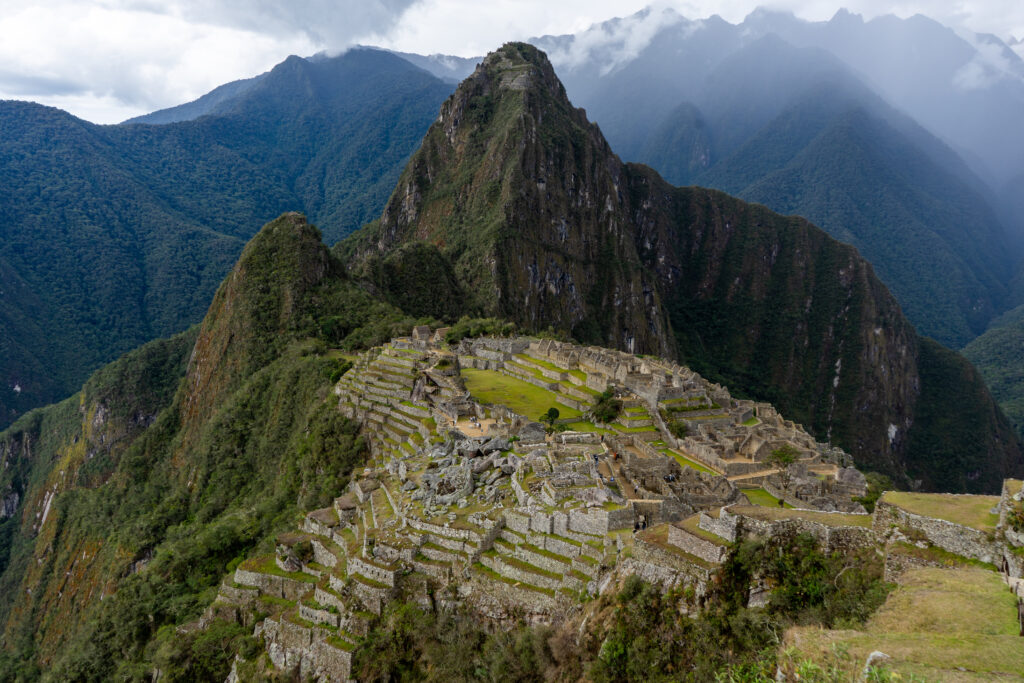
The Salkantay Trek is about a 45-mile (75 km) trek from the town of Soraypampa, up over Abra Salkantay Pass, down into the jungle, and all the way to the ancient Incan archaeological site, Machu Picchu.
Along the way you hike over the 15,092 foot (4600m) Abra Salkantay Pass, then quickly descend down into the jungle for the next few days of trekking.
Can I Hike the Salkantay Trek Without a Guide?
Yes! The Salkantay Trek to Machu Picchu is one of the most popular, and scenic trekking options in Peru, if not South America, and doesn’t require a guide like the nearby Inca Trail.
With some extra planning and research, it’s pretty easy to plan the Salkantay Trek without a guide. And this guide provides you with all the details so you can successfully plan your solo Salkantay Trek!
Details of the Salkantay Trek to Machu Picchu
| Distance | 45 mi, 72 km |
| Time | 5 days on average including transport to and from the trailheads |
| Location | South Central Peru, northwest of Cusco |
| Starting Point | Soraypampa |
| Ending Point | Machu Picchu or Aguas Calientes |
| Difficulty | Moderate – Difficult |
| Elevation Gain/Loss | ~14,500 ft, 4420 m gain; ~20,000 ft, 6100 m loss |
| Highest Point | 15,092 ft, 4600 m Abra Salkantay Pass |
| Terrain | Established trail the whole way. Steep up to Abra Salkantay Pass, rocky, steep ascents and descents. Then you enter the jungle. It gets slippery and much when wet. Option to take the road to skip parts of the trail. Closer to Machu Picchu you walk along train tracks and eventually hike up steep blocky steps up to Machu Picchu. |
| Permit Required | Yes, 20 soles (~$5 US), pay on arrival; reservation also required for Machu Picchu |
| Guide Required | No |
| Book Lodges Ahead | Sometimes; definitely book ahead during the busy season |
| Campsites are Established | Campsites are often part of the lodges. They allow access to bathrooms, showers, and the dining area. |
| Lodging/Services | Yes; most hikers stay in lodging on the Salkantay trek |
| Highlights | Laguna Humantay, Abra Salkantay Pass, Machu Picchu |
When to Hike the Salkantay Trek
It’s possible to hike the Salkantay Trek year-round, but the best weather is during the dry season from April to November.
The prime weather is from May to September with the rain picking up in the shoulder months of April and November. It is far more crowded hiking during the dry season so you should book lodges ahead of time.
I completed the Salkantay Trek in early December during the rainy season. I loved that the trails were far less crowded and I could book lodges upon arrival. While it did rain each afternoon, if you’re at camp early enough, by 2 or 3 pm, you will likely miss the rain on the trail.
Salkantay Trek Itinerary
I spent 3 days hiking the actual Salkantay Trek but I was technically away from Cusco for 5 days. I spent the first day getting to the trailhead followed by a day hike to Laguna Humantay.
The fifth day of the Salkantay Trek was spent transporting back to Cusco. It was an 11-hour journey that departed from a town near Machu Picchu. Here is a breakdown of the logistics.
Day 1: Cusco to Soraypampa with a day hike to Laguna Humantay

Day 1 was our transport day from the city of Cusco to the town of Soraypampa, the starting point for hiking the Salkantay Trek.
We stayed at the Humantay Sky Lodge. It cost us 55 soles for dinner, breakfast, and a bed in a 10-bedroom dorm.
This was the best price we found in town and it was located right at the split for the Laguna Humantay Trek and the Salkantay Trek. This saved us an extra 20 minutes of walking the next morning.
The Humantay Sky Lodge also has private lodging available for only a few US dollars more.
I’d recommend contacting the Humantay Sky Lodge on WhatsApp (+51 913 298 630) if you want to reserve in advance. The prices are cheaper in person than online, so don’t pay until you get there.
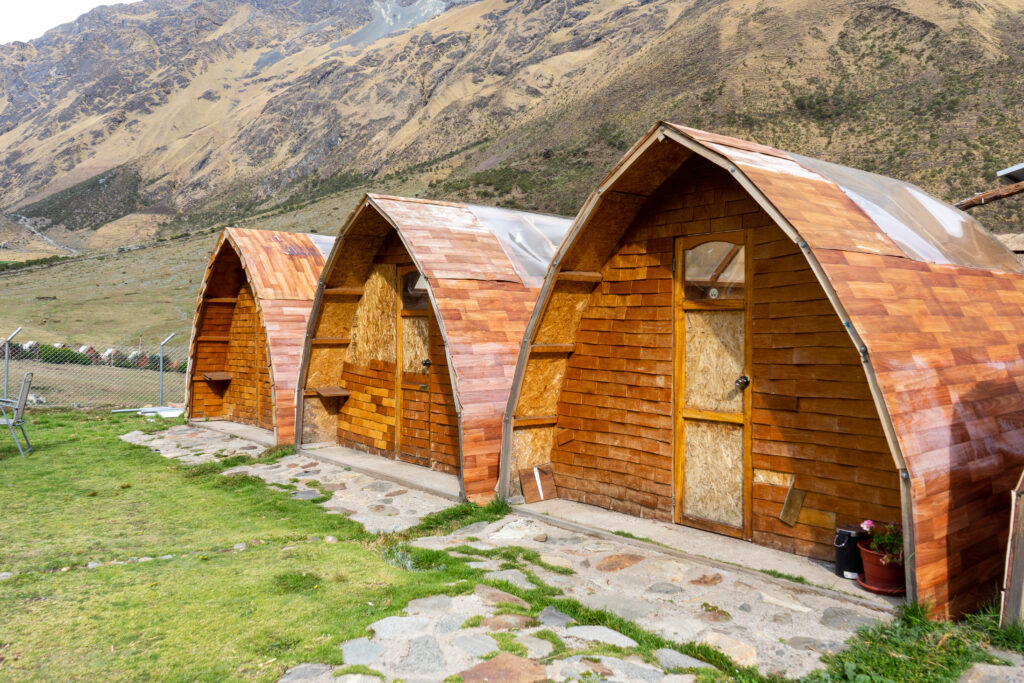
Transportation
The easiest way to reach Soraypampa, the start of the Salkantay Trek, is by taking a commercial bus tour to Laguna Humantay.
Buses run every day from Cusco and cost between 50 – 70 soles. They are the easiest and most efficient way to reach the start of the Salkantay Trek. Almost any agency in Cusco can arrange this.
An alternative option is taking a colectivo from Cusco to Mollepata for 15 – 20 soles and then taking a local bus to Soraypampa. We never found the local bus and ended up paying for a taxi which cost just as much as catching a ride with a local tour operator.
Day Hike to Laguna Humantay

Located right next to the start of the Salkantay Trek is the must-visit Laguna Humantay. It’s a short but steep hike up to a beautiful turquoise-blue alpine lake. It’s a great hike to acclimate for the Salkantay Trek and it is a great way to spend your day when you arrive early in Soraypampa.
Day 2: Soraypampa over Abra Salkantay Pass to Chaullay (12.5 mi, 20 km)
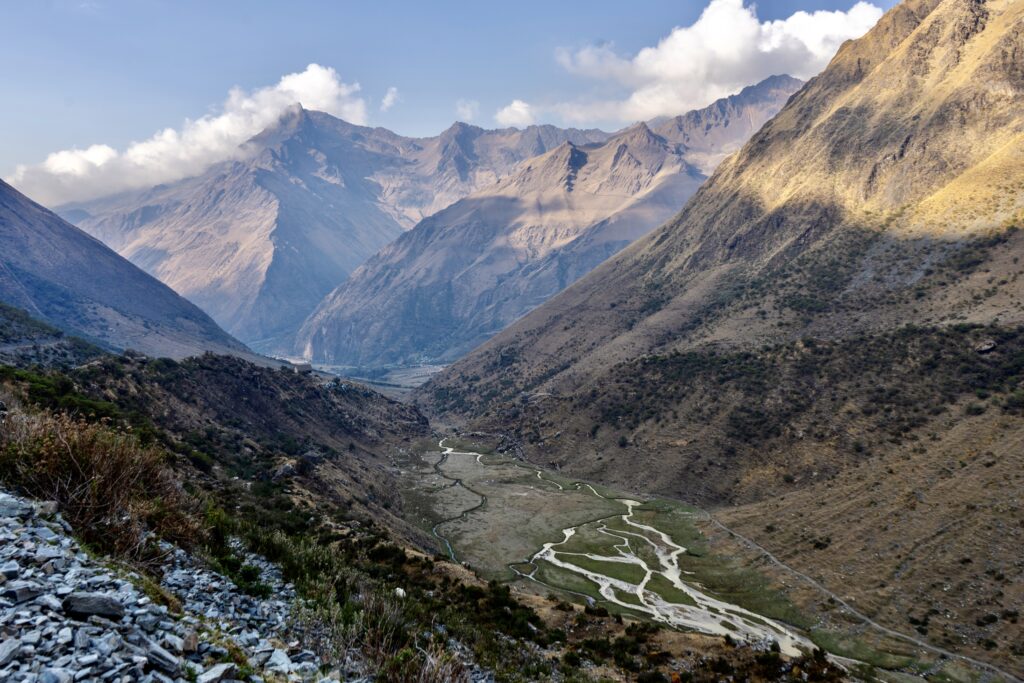
We started early on our first morning of hiking the Salkantay Trek as it was important to make it over the 15,092 foot (4600 m) Abra Salkantay Pass as early as possible. With a greater chance of rain and clouds moving in as the day went on, it’s often best to start early when hiking at high elevations.
We had breakfast at 5:30 at Humantay Sky Lodge then set off by 6:30. On average it takes between 2 – 3 hours to reach Abra Salkantay Pass if you’re in good shape. At the top of Abra Salkantay Pass, it was cold and windy so we didn’t stay for long but the views were worth the climb.
Then we had a long descent of around 6000 feet down to the town of Chaullay. Chaullay is the perfect town to stay in along the trek for your first night.
Many accommodations in Chaullay range from 60 – 80 soles a night and include a bed, dinner, breakfast, wifi, and a hot shower. Because we were trekking during the low season we had no trouble finding a place for the 10 of us hikers trekking without a guide.
When we showed up we were greeted with smiling faces and comfortable beds.
Day 3: Chaullay to Llactapata (13.5 mi, 22 km)
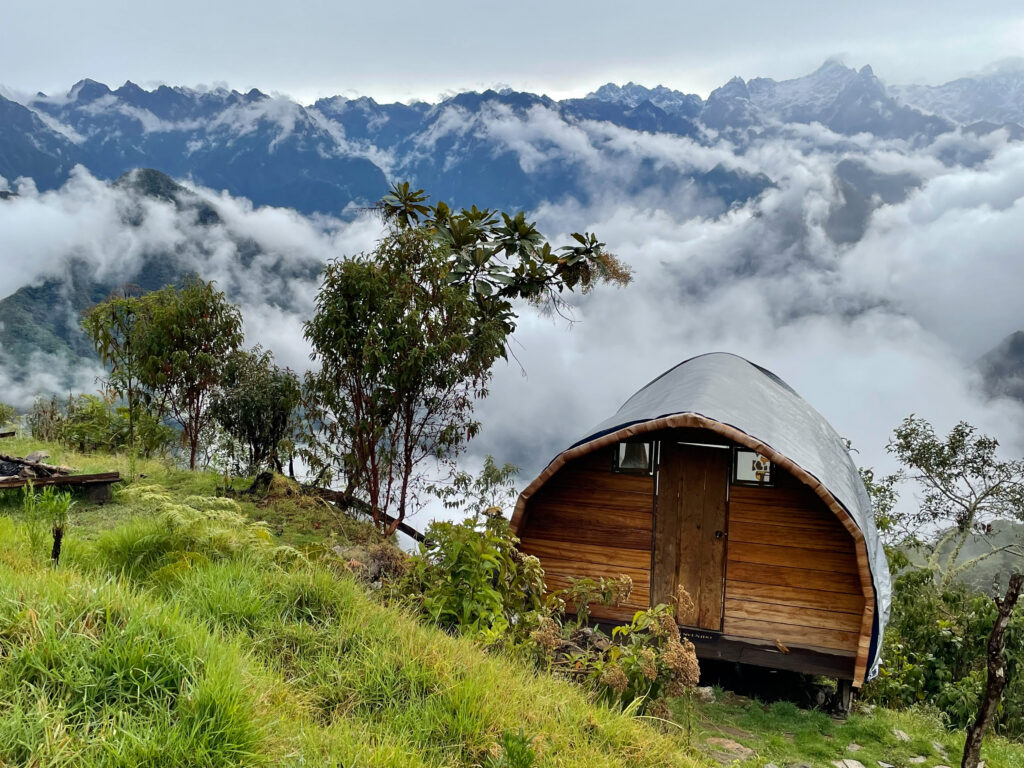
We all thought day 3 of hiking the Salkantay Trek would be pretty easy since it started with a long downhill followed by a short, yet very steep uphill. We were wrong. This day was pretty tough even though you’re no longer at altitude.
If you plan to hike the full Salkantay Trek, as listed on AllTrails, then start your day early. There are significant elevation gains and losses throughout the day. The trail parallels the road and tour groups sometimes take colectivos part of the way, cutting off some of the best parts!
But don’t worry, the evening in Llactapata was highly rewarding. We stayed at Machu Picchu Ecolodge which is undoubtedly one of the most beautiful places I’ve ever paid to sleep.
A bed, dinner, and breakfast cost 120 soles for a solo traveler and 160 for pairs. The accommodation was an ecolodge located on the edge of a cliff atop a mountain, looking down on Machu Picchu. It was stunning. And definitely, worth the extra money.
Day 4: Llactapata to Machu Picchu to Mandor (12 mi, 19 km)
On day 3 we decided to make the push all the way to Machu Picchu. Most people hike up to Machu Picchu on their fourth day however, we heard it’s less crowded in the afternoon. It also meant we could get back to Cusco earlier the following day.
Once again, this is a tough day. You have to hike all the way down the mountain from Llactapata. Then you spend a couple of hours walking along the famous train tracks to Machu Picchu.
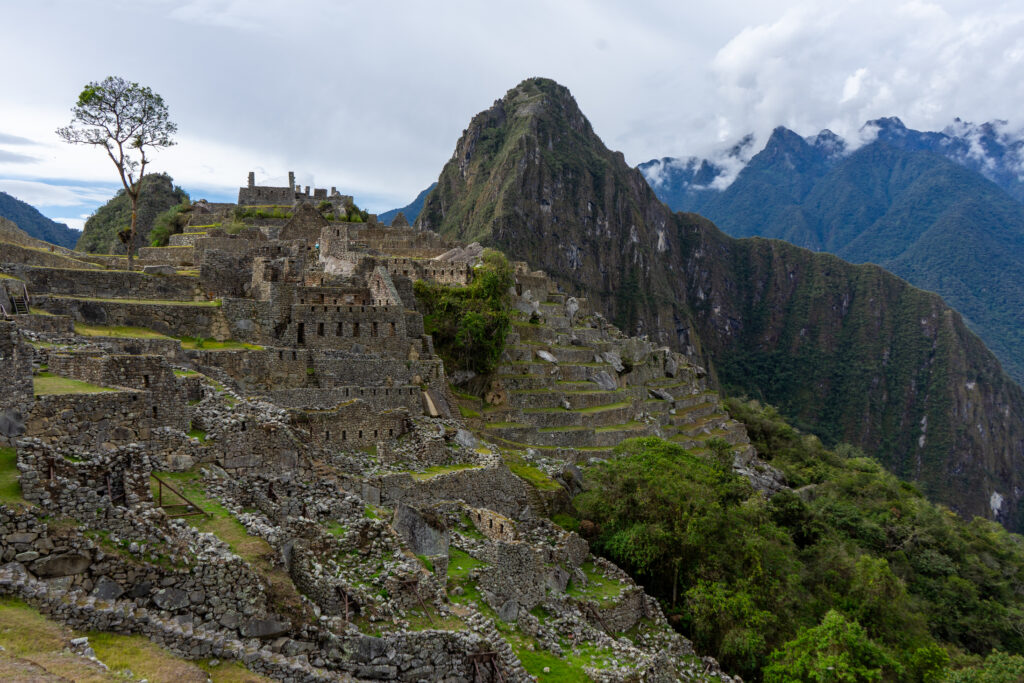
Finally, you’ll reach the steep blocky steps that climb up to Machu Picchu which you’ll have to descend later. It’s another tough day. If you’re not an avid hiker, I’d recommend getting early tickets to Machu Picchu on your fourth day.
That night we stayed in the town of Mandor, at Mandor Machu Picchu. It’s one of the only accommodations near Machu Picchu, outside of Aguas Calientes. Beds in a 4-person dorm were 40 soles a night and dinner was 20 soles. There are also private rooms and an area to camp.
Day 5: Mandor to Cusco
Staying in Mandor our last night put us closer to Hydroelectrica where we took the colectivos in the morning.
Many people stay in Aguas Calientes (where you should definitely stay if you’re taking the train back from Machu Picchu), however, if you’re taking the cheap way back to Cusco, staying in Mandor cuts off a little bit of walking time.
We arrived early at Hydroelectrica because we were told the collectivo would leave at 7:30 am. There was some leeway to that time but it was the start of a long day.
We would switch buses multiple times and did not reach Cusco until 11 hours later but it only cost us 50 soles to get back compared to the train rides which are around $80 US one way.
The locals were helpful in connecting us from one colectivo to the next.
Alternative Options
The itinerary I listed is intense compared to guided tours and other Salkantay Trek itineraries.
If you’re looking to make the Salkantay Trek a little easier, staying in Lucmabamba on night 2 is a great option. That will also give you time to visit the beautiful hot springs in Santa Teresa!
Lucmabamba is also known for its coffee-tasting experiences in the jungle! It’s a great stop along the Salkantay Trek. Don’t miss grabbing a cup of Inka Andean Starbucks Coffee if you stay in town or while hiking through!
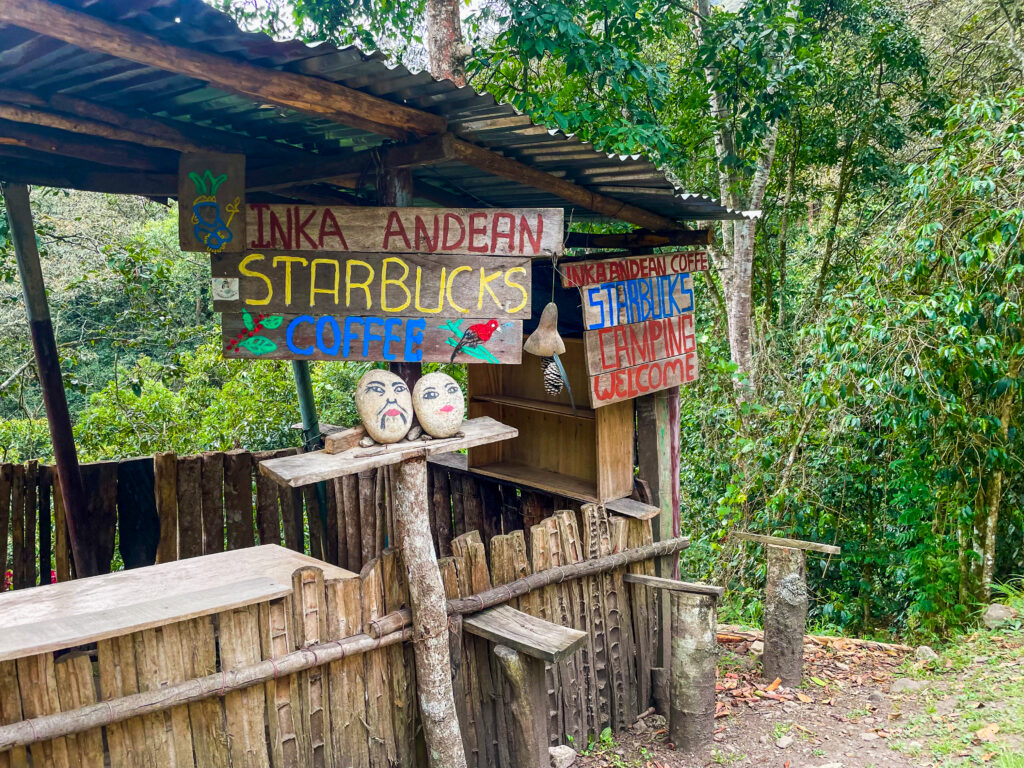
If you spend the night in Lucmabamba I’d recommend hiking Machu Picchu on the morning of day 5 of the Salkantay Trek. This will spread out your schedule and doesn’t change much other than getting back to Cusco late at night on the last day.
Salkantay Trek Planning
I contacted a few hostels/refugios before I started hiking the Salkantay Trek. I hiked the Salkantay Trek in December during the rainy and low season of Peru. Because of this, it was very easy to find accommodations.
If you plan to hike the Salkantay Trek during the peak months from April to October, I’d recommend reaching out to accommodations ahead of time, especially if you have a large group. Or start hiking early so you’re the first ones to reach the towns to claim a bed.
Cost of the Salkantay Trek Unguided (December 2022)
Machu Picchu ticket: 152 soles
Salkantay Trek permit: 20 soles
Transport from Cusco to Soraypampa: 70 soles
Transport from Hydroelectric to Cusco via colectivos: 50 soles
Accommodation 4 nights including dinners & breakfasts: 295 soles
Snacks and lunches: ~100 soles (I bought most snacks at a local market)
Total: 687 soles; ~$180 US
Overall, hiking the Salkantay Trek solo is cheaper than a guided tour. If you choose to camp, that will save a little money too. Also, the Machu Picchu Eco Lodge was a bit of a splurge and you can easily save money that night.
Most tour companies based out of Cusco charge $250 – $500 for guided Salkantay Treks to Machu Picchu.

Other things to know
Navigation: I used AllTrails to follow the official Salkantay Trek to Machu Picchu Route.
Tickets: Buy your Machu Picchu tickets online at the official government website for you to start your trek to guarantee your preferred time slot.
Altitude: This trek starts up high and then descends into the jungle. The first 2 days are the hardest in dealing with altitude sickness. Take your time hiking and spend a few days acclimating in Cusco before starting the Salkantay Trek.
Bugs: As you descend into the jungle bugs get REALLY bad. It’s not just mosquitoes, sandflies are also horrible. Bring bug spray or loose-fitting pants and clothing to avoid bites.
Gear Rentals: You can rent all of the gear you need for the trek in Cusco. I’d recommend checking out Speedy Gonzalo in Cusco for any gear rentals.
Snacks & Lunch: There are places along the trail to buy lunch and snacks. Lunch often costs around 15 soles. I also stocked up on snacks at the local San Pedro Market in Cusco.
Planning: The Salkantay Trek without a guide is just as easy to plan as any backpacking trip. If you need tips for planning your first backpacking trip, check it out here!

Salkantay Trek Packing List
This is a comprehensive Salkantay Trek packing list. Layers are essential for the Salkantay Trek to Machu Picchu. With varying elevations and climate zones, you never know what the day will bring and weather reports don’t work too well in the mountains. From rainy cold days up high at Abra Salkantay Pass to hot days in the jungle here are a few Salkantay Trek packing list essentials.
- Puffy coat
- Rain jacket
- Quick drying pants
- Sleep clothes
- Wool socks
- Clean socks for sleeping
- Baseball hat
- Warm winter hat
- Gloves
- Shoes suitable for hiking
- Flip flops/shoes to relax at lodges in
- First aid kit with essentials (bandaids, Neosporin, Ibuprofen, Tylenol, Benadryl)
- Passport photocopy or photo on phone
- Screenshot of Machu Picchu ticket
- 1000 soles per person (at least; ATMs are hard to come by)
- Trekking poles (optional)
- Backpack
- Tent, sleeping bag, & sleeping pad if you plan to camp
- Rain cover for backpack
- Sunscreen
- Water filter
- Water bottle
Hiking the Salkantay Trek to Machu Picchu solo takes a bit of planning but is doable for anyone willing to put the time into it. You’ll enjoy one of the most famous treks and sites that Peru has to offer and you’re sure to meet many incredible people along the way!


